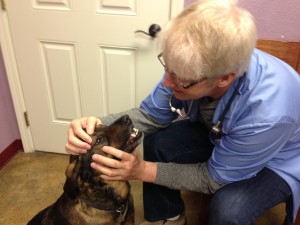Can you get diseases from your pets? Yes. And they can get them from you, too! Here’s what I had to say to a reader who wrote me about the spread of diseases between humans and pets:
Q: With all the talk of the Ebola virus a few months ago and how it can live in both people and animals, I’m curious about what other diseases can affect humans and animals. How are they spread and can they be prevented?
A: That’s a great question. Diseases that can be spread from animals to humans are called “zoonoses” (pronounced zo-uh-NO-sees). Some diseases, called “reverse zoonoses,” can also be spread from people to animals. The causes of zoonotic disease are bacteria, viruses, parasites and fungi. Zoonotic diseases or infections can be transmitted through bites or scratches or when the infected area is touched.
Some zoonotic diseases you may have heard of are rabies, ringworm and salmonellosis. Other diseases or parasites that can spread between animals and people include E. coli infection, roundworms, hookworms, leptospirosis, Lyme disease and Staphylococcus infection. Staph infections are a good example of reverse zoonoses, being more commonly transferred from people to animals.
Zoonotic diseases are of special concern when someone in the household has a weakened immune system. This could be someone who is sick or who is simply very young or very old. Those people are more at risk of contracting disease because their immune systems aren’t strong enough to fight off disease-causing invaders.
Good hygiene is the best way to prevent the transmission of diseases between animals and people. Always wash your hands with soap and water after handling your pet (especially if he has an infectious disease), as well as after handling pet food, including dry food. Make sure kids do the same. To prevent transmission of parasites such as Cheyletiella or scabies mites, roundworms and hookworms, deworm your pet regularly. Rabies, of course, is fatal, so it’s essential to vaccinate your pets against the disease as required by law and to seek immediate treatment if you are bitten by a potentially rabid animal.
Read more, including what your cat’s body language is telling you, in this week’s Pet Connection!
Do you have a pet question? Send it to askpetconnection@gmail.com!




